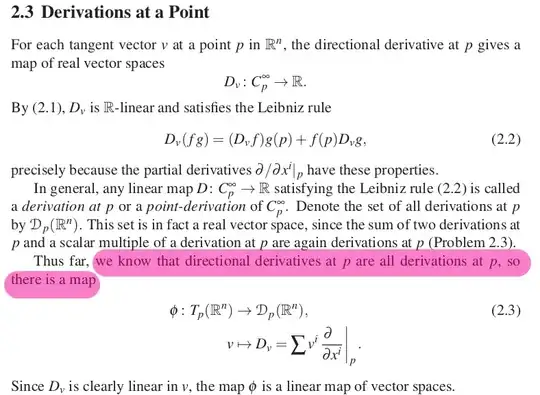Hi i am reading An introduction to Manifolds by Loring. And have one doubt under section 2.3 Derivations at a point. It is written that
we know that directional derivatives at $p$ are all derivations at $p$, so there is a map $$\phi:T_{p}\mathbb{R}^n\to D_{p}\mathbb{R}^n\\ v\mapsto D_v=\Sigma v^i \left.\frac{\partial}{\partial x^i}\right|_p$$
My doubt is that how is there a map as defined above. For example i know that $D_v f=\Sigma v^i \left.\frac{\partial f}{\partial x^i}\right|_p$ but how does this tell us that there is a map $\phi$ from $T_{p}\mathbb{R}^n\to D_{p}\mathbb{R}^n$ ? Note that $D_{p}\mathbb{R}^n$ is the set of all derivations at $p$ and $T_{p}\mathbb{R}^n$ is the set of all tangent vectors at point $p$. For reference i am attaching the screenshot of the portion where i have highlighted the part where this is mentioned. And what does it mean to have a map $\phi$ from $T_{p}\mathbb{R}^n$ to $D_{p}\mathbb{R}^n$?
